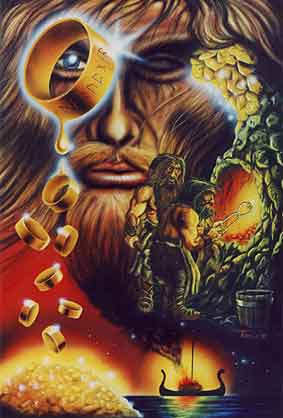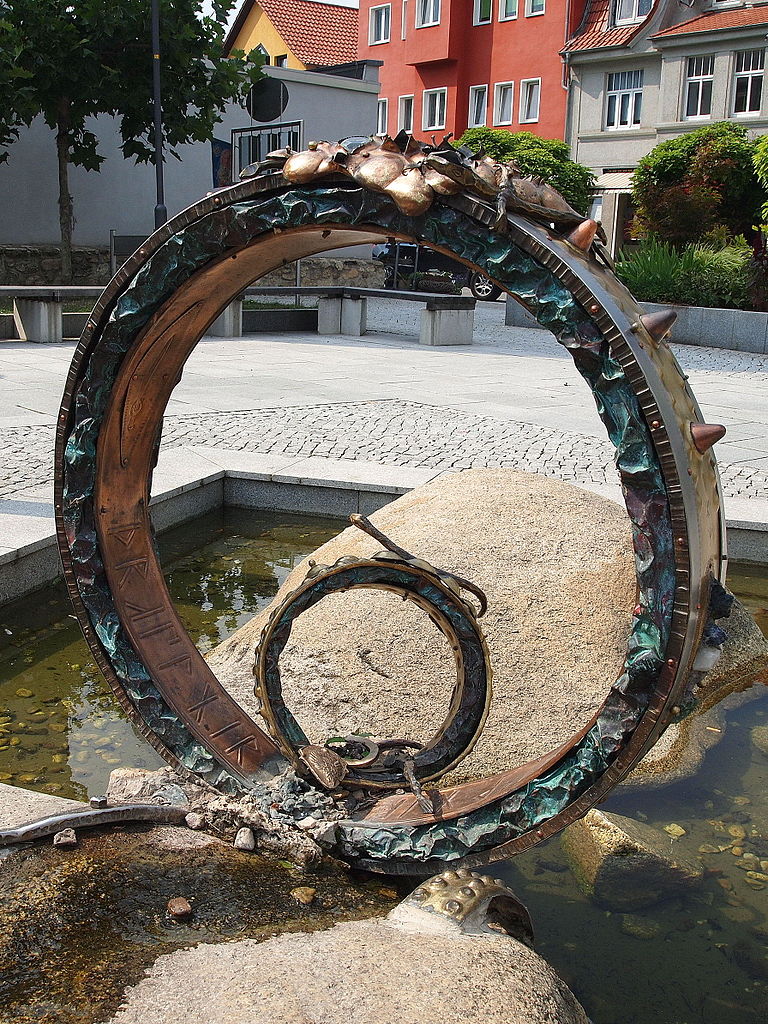The Draupnir ring, often referred to as Odin’s ring, is a legendary object in Norse mythology renowned for its mystical properties. It belongs to Odin, the chief of the Norse gods, and is said to have been crafted by the skilled dwarven brothers Brokkr and Eitri. According to the myth, Loki commissioned the ring along with other magical items as part of a wager to the dwarves, challenging them to outdo the talents of another set of dwarves.
How Did the Draupnir Become Odin’s Ring?
Odin acquired the Draupnir ring through a cunning scheme involving Loki, the mischievous trickster god, and the skilled dwarven craftsmen, Brokkr and Eitri. In a bid to outshine the work of another set of dwarves, Loki made a daring wager with the duo, challenging them to create treasures surpassing those of their rivals.
As part of this challenge, Loki promised the dwarves his own head if they succeeded. With their exceptional craftsmanship, Brokkr and Eitri fashioned the magnificent Draupnir ring, along with other legendary items. Despite Loki’s efforts to disrupt their work, the dwarves completed their creations, including Odin’s prized ring. Thus, through Loki’s conniving and the dwarves’ skill, Odin came to possess the renowned Draupnir ring.
What is Draupnir’s Ability?
The Draupnir ring possesses the ability to multiply itself: every ninth night, it produces eight identical rings of equal value to the original.

Symbolism of the Draupnir Ring
In Norse mythology, Odin, the chief of the gods, placed the Draupnir ring on the funeral pyre of Balder, who was his son, symbolizing the end of summer. As the flames consumed Balder, representing the passing of the warm season, the ring was burnt with him.
However, in a poignant turn of events, Balder sent the ring back to Odin from the realm of the dead. This act was not merely a gesture of remembrance; it carried a deeper message. Balder’s wife, Nanna, representing the flower-goddess and the coming of spring, sent Frigg, Odin’s wife, a carpet of grass, symbolizing the return of vegetation and fruitfulness.
The return of the ring and the carpet of grass signify the cyclical nature of life and the eternal renewal of the earth’s fertility. Yet, the symbolism of the Draupnir ring extends beyond the realm of agriculture.
Further Insights into Draupnir Ring’s Symbolism
Odin’s ring is likened to a golden chain, each ring interlinked with another, symbolizing the historical connection between times and events. This imagery evokes a sense of continuity and progression, as each generation builds upon the ideas of those who came before them. Just as the ring multiplies and grows with each generation, so too does humanity’s collective understanding evolve, forming a rich and intricate tapestry of thought and knowledge.
From the dawn of time to the present day, this golden chain of ideas continues to shape our understanding of the world, weaving together past, present, and future in an unbroken continuum of growth and discovery.
